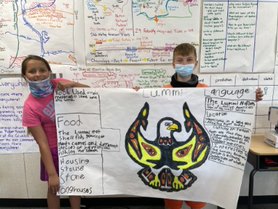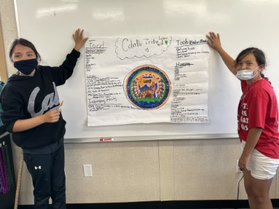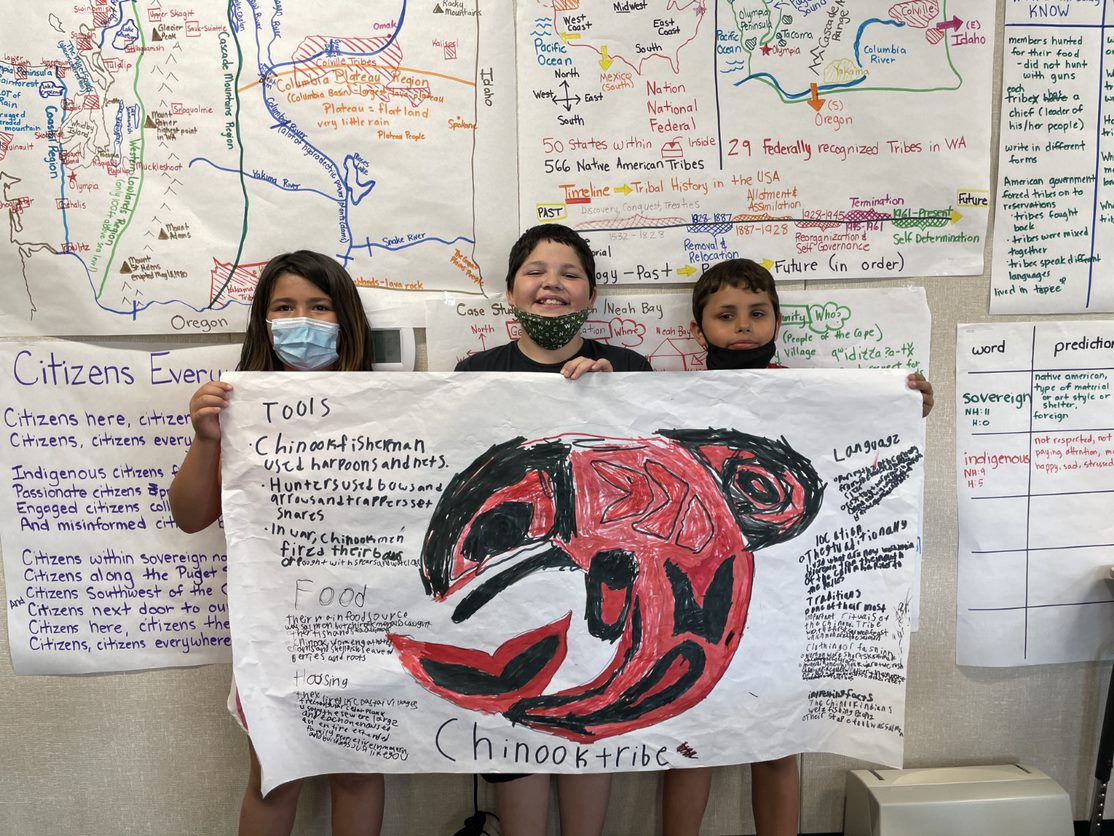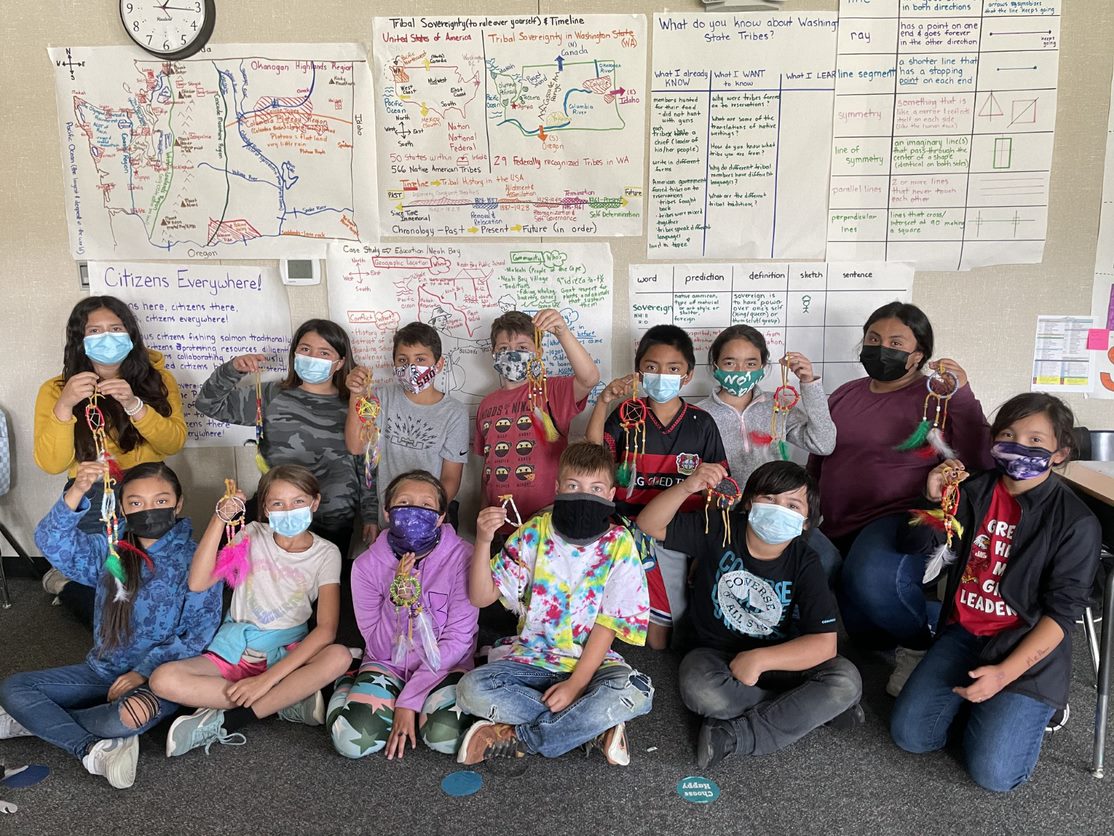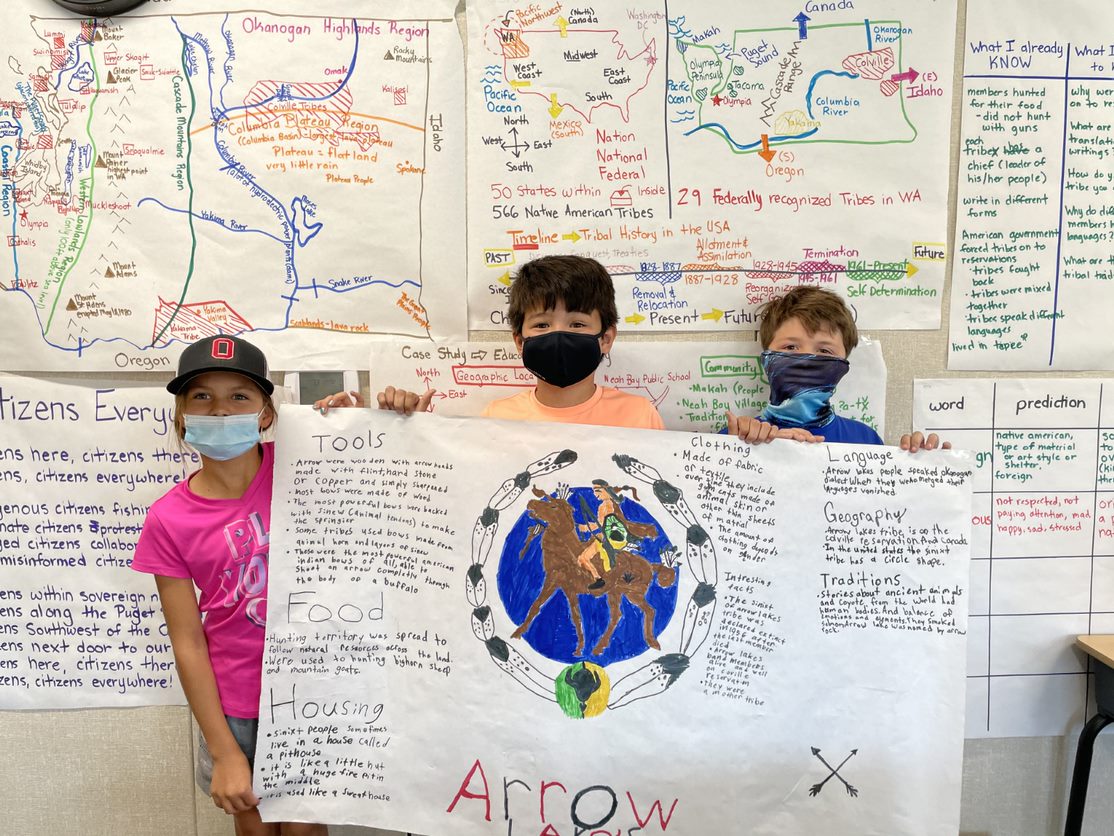The fabric of heritage: quilting & poetry support heritage studies
Spring 2021
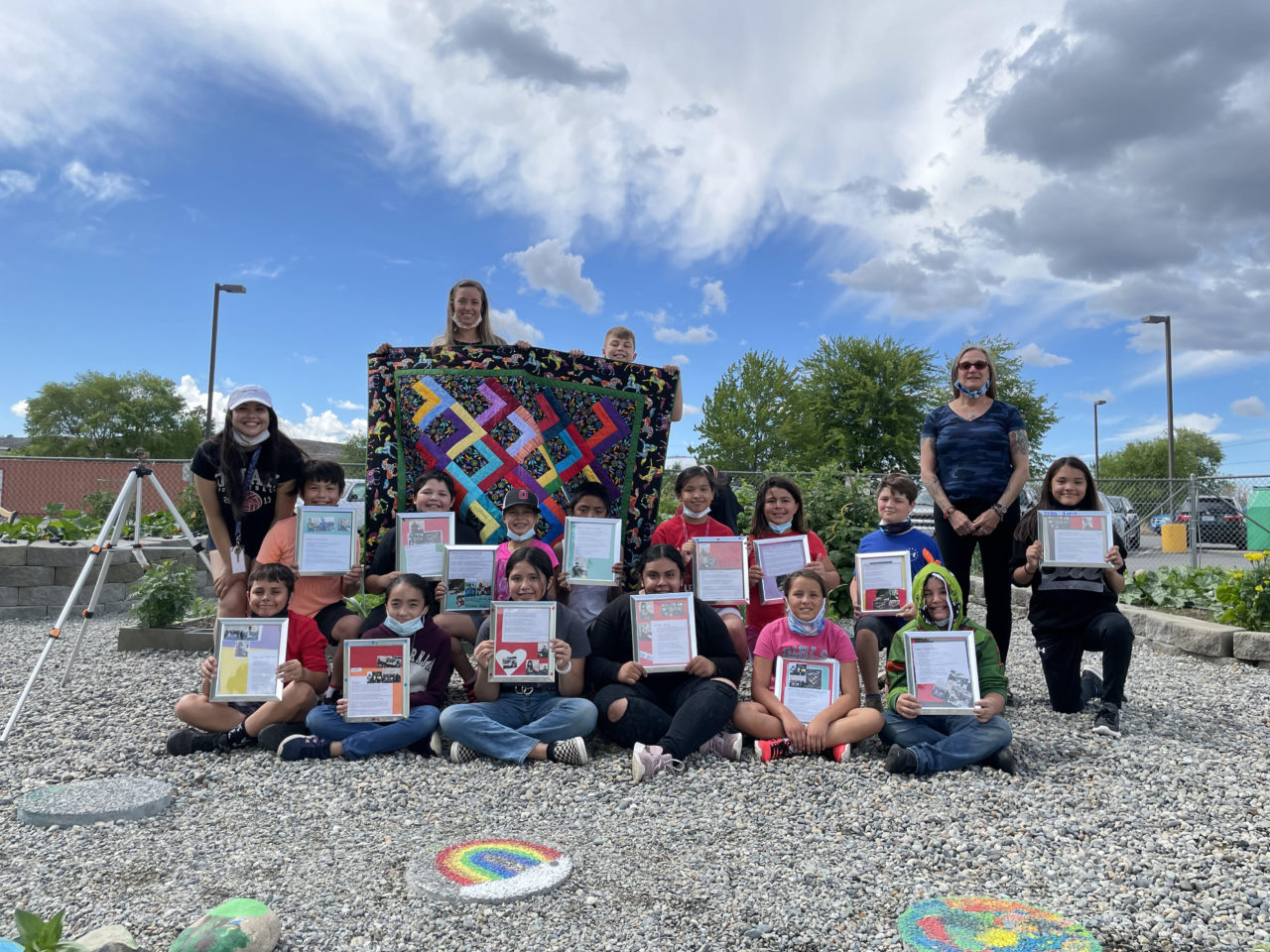
Using poetry and quilting as avenues for exploration, fourth grade students at East Omak Elementary School journeyed into ancestry and heritage.
Spearheaded by fourth grade teacher Kara Thornton, the project includes fiber arts, poetry writing, a walking field trip, and Indigenous studies.
Mrs. Thornton learned to quilt from her grandmother when she was in third grade, and quilting has been a meaningful activity in her life ever since–an activity she began sharing with her students several years ago.

“The project starts with a book called “The Quiltmaker’s Gift,” which examines the nature of generosity and questions whether material wealth alone can provide happiness (in the book an elderly quiltmaker makes quilts and gives them away),” Mrs. Thornton says. “We then find a pattern that each student can participate in equally, [such as] the Log Cabin pattern, [which allows] each student to make an individual block.”
Mrs. Thornton then walks her students from school down to Omak’s Main Street, to the Needlelyn Time quilt shop, where the owner, Lyn, helps them choose fabrics (considering warm and cool colors, as well as complementary colors). She also teaches them about business cost/pricing, the measurement component of quilting, the quilting store’s history, and how technology has been integrated into the traditional skill of quilting.
Once the fabric is cut, Mrs. Thornton works with students to sew, iron, and complete individual blocks. After the blocks are sewn together, a local quilter, Carol O’Dell, does the free-hand long arm quilting and design.
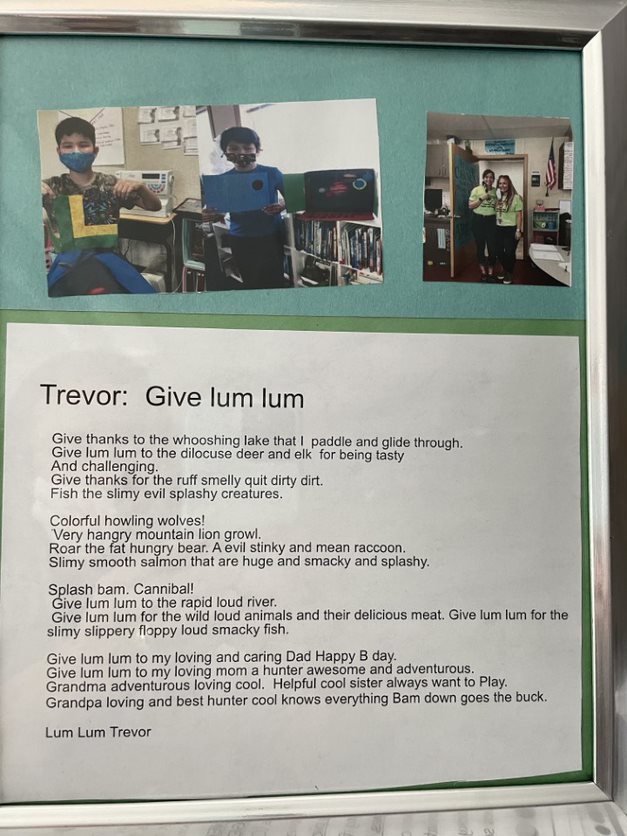
While this year’s quilt was in the long arm shop being quilted, poet Subhaga Crystal Bacon led poetry workshops with the students. Bacon, who is a Methow Arts teaching artist and instructs at Wenatchee Valley College, focused her lessons on the history of the log cabin quilt pattern, elements of poetry, and ancestors & family heritage. Mrs. Thornton says, “Students studied two forms of poetry: epistolary and narrative poems before writing their own. Later, [Subhaga] focused on descriptive language and sensory details.”
“Give praise to the shivery lake/Give praise to the beautiful islands”
~ East Omak Elementary 4th grade student
Subhaga gave each student individual feedback several times over the course of the poetry residency, encouraging them to use specific imagery and descriptive words in their praise poems.
“I give thanks to the noisy, wild reservation”
~ East Omak Elementary 4th grade student
On her last visit, Subhaga focused on incorporating different languages into students’ poems. Some students chose to weave their native languages into their poems, such as Salish* and Spanish.
Lum lum to the rapid loud river/Lum lum to the wild animals *
~ East Omak Elementary 4th grade student
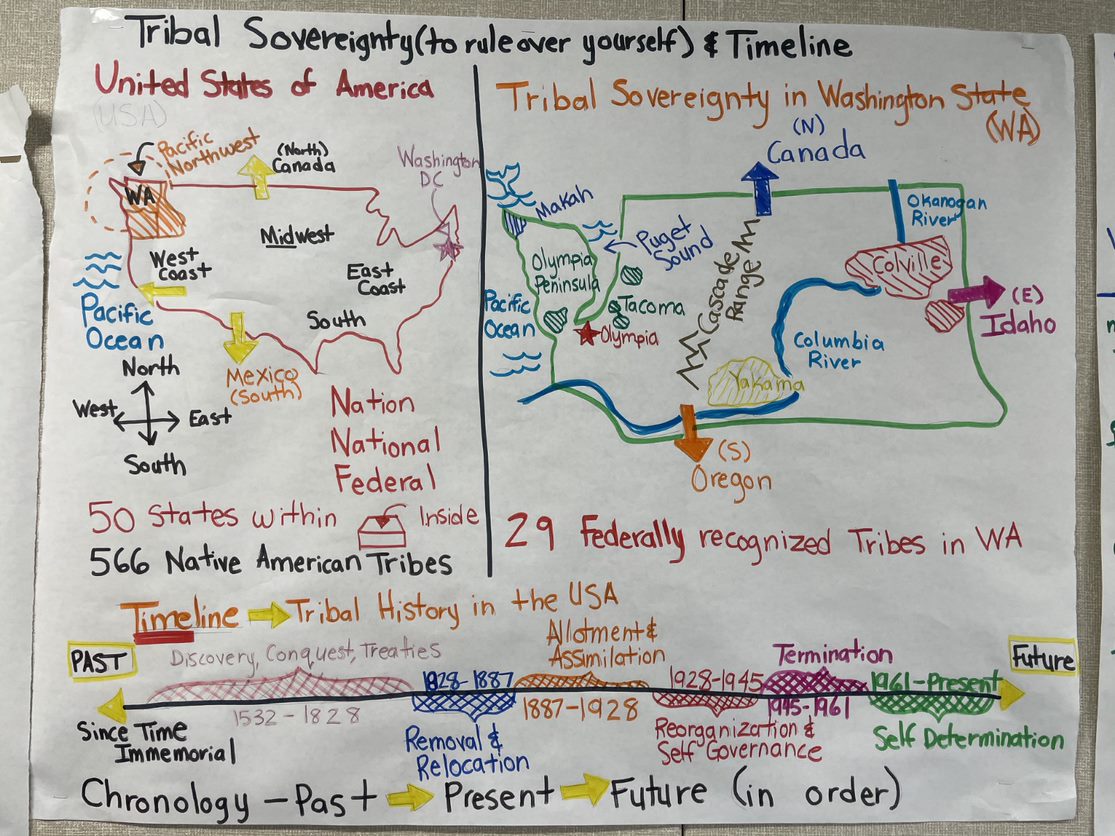
The quilting and poetry project fit into a broader unit within the school: Native American Studies. LaCoda Miller, the JOM** instructor for East Omak Elementary, “partnered with our class for about two months to teach a hands-on approach to local Native American studies,” Mrs. Thornton says. “This was inspired from the poem project as students looked into their ancestry and family heritage. She comes into our class 2 days/week and teaches lessons based on Indigenous culture, history, and contemporary issues. Students have learned about reservation life, the removal era, boarding schools, the significance of eagle feathers, Indigenous art, storytelling through reader’s theater and folktales, dreamcatchers. All the students have had a very positive response and enjoyed the time LaCoda spent with them in the classroom teaching about Native People. She brought a welcoming and open-mind philosophy to our classroom and great insight into Native American culture, traditions, and life today.”
The students celebrated the project’s completion in their school garden with Bacon and their teacher, having stitched together words, fabric, history, and heritage.
*There are several variations of the phonetic spelling of the Salish word for “thank you,” including lem lempt, lim limpt, lum lum (as this fourth grader has chosen), lemlmtš, limlmtx, and others. It varies among and within the Coastal Salish, Interior Salish, and other Salish languages. In practice, any of these spellings tends to be used as “thank you,” but the meaning is much more profound, and is based on the root word “lemt,” meaning thankful or glad. In the fullest sense, it is really an exclamation of deep gratitude. For more information about the beautiful and complex Colville Tribal Language, visit the Colville Confederated Tribes Language Preservation Program HERE.
**Johnson O’Malley (JOM) is a program for all American Indian students that are enrolled in a federally recognized Tribe. Read more about Johnson O’Malley HERE.
